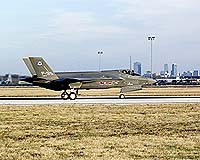| . |  |
. |
Manama, Bahrain (UPI) Jun 16, 2009 Britain's Royal Navy has reinforced its mine-hunting capabilities in the Gulf and the Strait of Hormuz, the only way in and out of the strategic waterway through which some 40 percent of the world's oil supplies pass. The deployment has coincided with concerns that Iran would retaliate against any U.S. or Israeli attacks on its nuclear infrastructure and other strategic targets by seeking to close the narrow strait and cut off oil supplies to Asia, Europe and the United States. Among the most likely weapons the Iranians would use to block this vital energy artery are sea mines, which if laid in sufficient quantities would be difficult to combat. Analysts say it would take weeks, possibly months, for the allies to clear safe passages in the strait if Iran was able to sow as few as 200-300 mines. "Tehran has amassed an arsenal of naval mines, and mining would be one of the most lasting and time-consuming tactic to counter," U.S. security consultancy Strategic Forecasting said. "Iranian forces would use both surface and submarine assets -- some more surreptitious, some less so -- to attempt to saturate the gulf." Iran controls the gulf's eastern shore, where it has deployed batteries of Chinese-designed C-801 and C-802 anti-ship missiles. In recent months it has also reportedly upgraded several naval bases or constructed new ones. The low-key British operation is part of a systematic upgrading of allied naval forces in the gulf and the adjacent Arabian Sea conducted over the last year or so. The British operation is run from Bahrain, an island state off Saudi Arabia's coast midway down the gulf, where the Royal Navy maintains a permanent, mines countermeasures force of four ships in the region to bolster the mine warfare flotilla attached to the U.S. Navy's 5th Fleet, which has headquarters in Bahrain. The Royal Navy has more experience in mine warfare than most navies, much of it in the gulf. Over the last 30 years it has been involved in five major mine-clearing operations: the Falkland Islands in the South Atlantic during the 1982 war with Argentina, the Red Sea in 1984, the gulf in the 1987-88 Tanker War, off Kuwait in the 1991 Gulf War and in Iraqi waters in the northern gulf at the start of the U.S.-led invasion in March 2003. The strait, a 108-mile-long, horseshoe-shaped waterway between Iran and Oman, is one of the world's most strategic bodies of water. At its narrowest point, it's 33 miles wide. But the two deepwater channels for incoming and outgoing vessels are much slimmer, each 2 miles wide with a 2-mile-wide median between them. On a typical day, around 50 tankers carrying 14 million to 17 million barrels of oil and oil products pass through the strait, along with dozens of freighters. This traffic comprises most of the oil and liquefied natural gas exports of Saudi Arabia, the United Arab Emirates, Qatar, Kuwait -- and Iran. The Gulf Arab states import most of their food and consumer goods through the strait, and a prolonged shutdown would cause serious economic disruption. The authoritative Jane's Intelligence Review, published in London, said, "If this choke point was closed for an extended period, the economies of the Middle East would suffer significantly and this would generate severe economic dislocation around the world." That would send oil prices, hovering around $70 a barrel, back to mid-2008 levels of around $150 a barrel or possibly higher. If the strait were closed, only about 3 million barrels of oil per day could realistically be redirected across Saudi Arabia through a trans-Arabian pipeline to the Red Sea. But there would be no other way to transport the 31 million tons a year of LNG -- 18 percent of world consumption -- that Qatar and the United Arab Emirates export. Share This Article With Planet Earth
Related Links The latest in Military Technology for the 21st century at SpaceWar.com
 Northrop Grumman Delivers Flight-Ready Integrated CNI System For F-35
Northrop Grumman Delivers Flight-Ready Integrated CNI System For F-35San Diego CA (SPX) Jun 16, 2009 Northrop Grumman has delivered the initial flight-ready integrated communications, navigation and identification (CNI) system for Lockheed Martin's F-35 Lightning II joint strike fighter program. The system has successfully completed safety of flight tests and obtained approval for flying this summer onboard the first mission systems equipped F-35 aircraft. When fully developed, Northrop ... read more |
|
| The content herein, unless otherwise known to be public domain, are Copyright 1995-2009 - SpaceDaily. AFP and UPI Wire Stories are copyright Agence France-Presse and United Press International. ESA Portal Reports are copyright European Space Agency. All NASA sourced material is public domain. Additional copyrights may apply in whole or part to other bona fide parties. Advertising does not imply endorsement,agreement or approval of any opinions, statements or information provided by SpaceDaily on any Web page published or hosted by SpaceDaily. Privacy Statement |